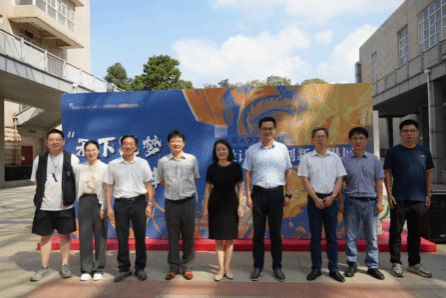On September 22,2025, the "Jiangsu University School of Art Design Innovation Achievements Exhibition for Agricultural Empowerment" was officially launched, jointly organized by the Party Committee Propaganda Department, Youth League Committee, and School of Art of Jiangsu University. The exhibition showcased innovative practices by faculty and students in harnessing design wisdom to boost agricultural development, injecting new momentum into rural revitalization through the integration of art and technology. Attendees included Vice President Chen Hong, Youth League Secretary Zhang Yongqiang, Deputy Director of the Propaganda Department Wang Yuzhong, Party Committee Secretary of the School of Agricultural Engineering Liao Zhiling, and Party Committee Secretary of the School of Art Zhao Ming. Vice President Chen Hong delivered the opening remarks.

This exhibition closely aligns with the core principles of rural revitalization strategy, covering product design, environmental planning, and visual communication. Through the creative approach of deep integration between "technology + aesthetics," it presents a series of designs that combine practicality with cultural sensibility. Notably, intelligent agricultural machinery designs break away from traditional single-functionality, enhancing operational efficiency while incorporating elements of rustic aesthetics. Case studies on rural space revitalization leverage local culture as a foundation, revitalizing aging villages through landscape transformation and functional restructuring. Agricultural product brand design focuses on regional characteristics, using visual storytelling to showcase rural narratives and help agricultural products gain market traction.

These achievements not only demonstrate design's pivotal role in boosting agricultural productivity, shaping new urban-rural lifestyles, and preserving cultural heritage, but also vividly embody the philosophy of "design for agriculture, art revitalizing villages." A representative from Jiangsu University's School of Art emphasized that the university will continue to deepen interdisciplinary collaboration between design and agriculture, bringing more design innovations to rural areas and contributing academic expertise to rural revitalization.
